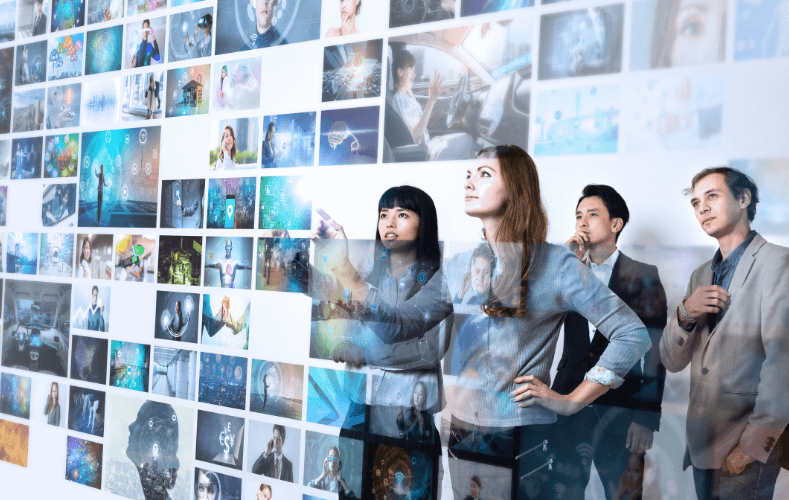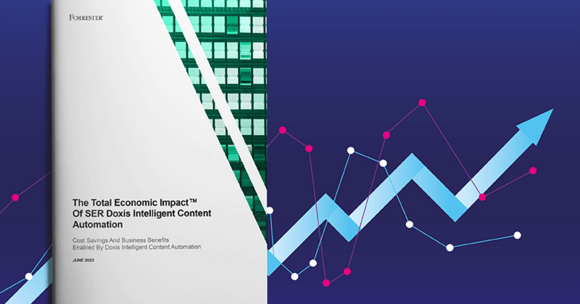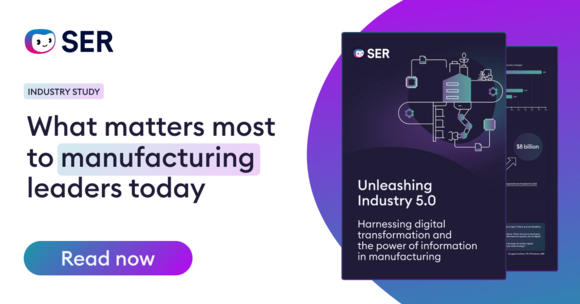SER Blog Customer Stories & Use Cases
Enterprise Content Show Episode 1 recap: Describing life, the universe & everything
How the Natural History Museum is digitizing 4 billion years of history with Doxis
In the debut episode of our new podcast, The Enterprise Content Show, hosts William McInnes (Chief Marketing Officer) and Franziska Thomas (Account Manager) dive into what makes enterprise content the heartbeat of every organization, and how the Natural History Museum, London, is bringing that philosophy to life. Their guest, Dr. Steen Dupont, Program Manager for the museum’s ambitious RECODE project, shares the incredible impact of digitizing centuries of research, and how his team can leverage a now connected world of knowledge available at the click of a mouse.
As Steen says, this is a story about "life, the universe and everything" in digital form, powered by next-generation content management, Doxis.

Why all digital transformation starts with a document
Will and Franzi kick off by reminding us of something deceptively simple: “Everything important starts with a document — birth, marriage, employment and especially innovation.”
That’s the DNA of SER’s mission to empower enterprises to harness the full potential of their content. But as Franzi notes, “There’s no process without a document, and no document without a process.” Documents contain a ton of critical knowledge after all, acting as the bloodstream of our organizations. The challenge? Extracting it.
This brings us neatly along to the Natural History Museum’s own dream of turning a mountain of collections all filled with insights into a digital wellspring of knowledge.
Inside the Natural History Museum’s archive revolution
Steen — affectionately dubbed ‘Indiana Jones’ for blending his museum work with an adventurous spirit — manages RECODE: an initiative to digitally capture and archive one of the world’s biggest collection of specimens, all while automating the workflows surrounding the management of their records. The scale is mind-boggling:
- There’s a total of 80 million specimens, from insects and whale bones all the way to meteorites
- Exceptional progress made with 25 million+ metadata records already digitized
- The overall goal is to create a living, interconnected digital ecosystem describing “life, the universe, and everything.”
But this goes beyond digital storage. This is knowledge engineering. As Steen explains: “We’re not just digitizing things. We’re describing the natural world and making it interoperable, sustainable and future-proof.” The key to achieving that vision? Doxis, the next-gen enterprise content management (ECM) platform.
Just for context, ECM software helps companies organize and control all their information in one secure place. It keeps documents, emails and records easy to find, share and use, while automating everyday tasks like filing and approvals.
The NHM’s biggest challenge? The future itself
When asked about the biggest problem RECODE set out to solve, Steen’s answer is striking: “The problem was the future.”
To stay relevant in a data-driven era, the museum needed a platform with workflow automation, AI integration and open data standards — a system built not just to manage today’s content but to connect tomorrow’s knowledge. What’s more, Steen needs a standardized way to send and receive data from other museums, all to facilitate the worthy goal of sharing knowledge that was once hidden in ancient records.
That’s why the museum chose Doxis, because out of all the solutions considered, it was the one that could best combine structured and unstructured data, create semantic connections and enable machine learning insights across collections. In simple terms, Doxis brings all kinds of information together and actually makes sense of it. Whether it’s a spreadsheet, a scanned document or a photo, Doxis links everything so you can see how it all fits together.
From chaos to connection: Building an interconnected data universe
Digitizing 250 years of research creates inevitable messiness. But instead of seeing that as a setback, Steen calls it an opportunity for innovation: “Generating data organically over centuries creates a lot of mess. But we can’t just start over we have to bring history with us.”
Doxis helps the museum turn that “mess” into meaning. Using interconnected data models, every artifact from a moth specimen to Darwin’s voyage logs becomes a node in a living network of knowledge. Steen describes it vividly, “If you plot every specimen by collection location, you can see the outline of the world, no map needed.”
This is data storytelling at its finest: transforming archives into dynamic, explorable universes.
Another one of Steen’s project highlights? Our collaboration
Steen emphasizes that this transformation isn’t a one-way project; it’s a partnership: “We weren’t just telling SER what to build. We were solving the problem together.”
Through close collaboration with SER’s Professional Services team, the museum has co-developed features like two-way relationship modeling — allowing users to see not only who collected what, but also what each collector contributed to the scientific record. This means that Steen’s team saves hours of time that was once spent scouring information, sometimes physically, across centuries of research. And with ongoing collaboration and support, SER is dedicated to helping Steen and his team unlock additional automation, enabling them to spend more time doing what they love: making groundbreaking discoveries.
AI is on the horizon with a vision of accelerated discovery
The conversation naturally turned to AI, where Steen’s enthusiasm was contagious. AI, he says, isn’t just a buzzword for the museum, but a potential tool for truth discovery. “AI can trawl through massive amounts of data and find connections humans would never spot. It can even detect errors, like a researcher spelling a species name wrong for decades.”
It's exciting to imagine how AI and machine learning will help Steen and his users not only enhance data quality but generate instant insights into their findings. This will rapidly accelerate discovery and even assist in revaluating past theories that were made without the assistance of these powerful AI agents.
Superhuman Search and the next AI goldrush
In the episode’s final segment, Marc Kroll, SER’s AI Product Manager, hopped onto the digital stage to share what’s next for Doxis. He gave an exciting sneak peek into Doxis’ Superhuman Search feature and how it’s helping organizations rapidly expediate enterprise knowledge retrieval: “Just type a natural question into Doxis and the AI searches across all of your content to give you a summarized, grounded answer.”
And in an absolute bombshell moment, Franzi asked Marc to finish this sentence, “The future of AI in content management is...” and his response was nothing short of a mic drop:
“Undeniably something with really big impact, as the content management system is the thing that most of the AIs are craving for — the pile of gold with all of the data in it.”
"...Just let that sink in,” said Will.
What all of this means for your enterprise
The Natural History Museum’s journey mirrors a broader truth for enterprises everywhere: Data is not just an asset — it’s a story waiting to be told. By combining enterprise content management, AI and humans that are passionate about the quality of the data they work with, organizations can finally make their knowledge more visible, more connected and alive.
Key takeaways:
- Shape the future, don’t chase it:
There's a massive advantage in using technology like an ECM platform to better prepare your documents as food for any AI solutions, helping you stay ahead instead of patching up legacy tools. - Connect your content:
Bring documents, emails and data from different systems into one place. When information connects, patterns emerge and decisions get clearer, and more powerful. - Collaborate deeply:
Stay involved in the creation process from day one. When customers and vendors build together, they avoid mismatched expectations, costly rework and long delays — and end up with solutions that actually fit the business. - Leverage AI that works with you, not against
The best AI-powered solutions should make your data cleaner, help you discover insights faster and give more people access to the knowledge they need — not bury teams in irrelevant results or take decisions out of their hands. - Tell your story with data
When your information connects, you can trace how work happens, see where decisions come from and spot new opportunities to improve.
All in all, connected knowledge is the key to real transformation
The Enterprise Content Show may have begun with laughs and emoji confessions, but it wrapped up with a tangible sense of direction. When organizations like the Natural History Museum build a solid foundation of structured, connected data through effective content management, they start to see their information as a living network of knowledge — one that can be explored and understood with ease. That foundation also changes how we work with AI. As we’ve said many times before, it’s only as good as what you feed it, and now organizations finally have the means to give it the quality and context it needs to deliver real results.
Want to check out the first episode of the Enterprise Content Show for yourself? Find it here.
The latest digitization trends, laws and guidelines, and helpful tips straight to your inbox: Subscribe to our newsletter.
How can we help you?
+49 (0) 30 498582-0Your message has reached us!
We appreciate your interest and will get back to you shortly.




